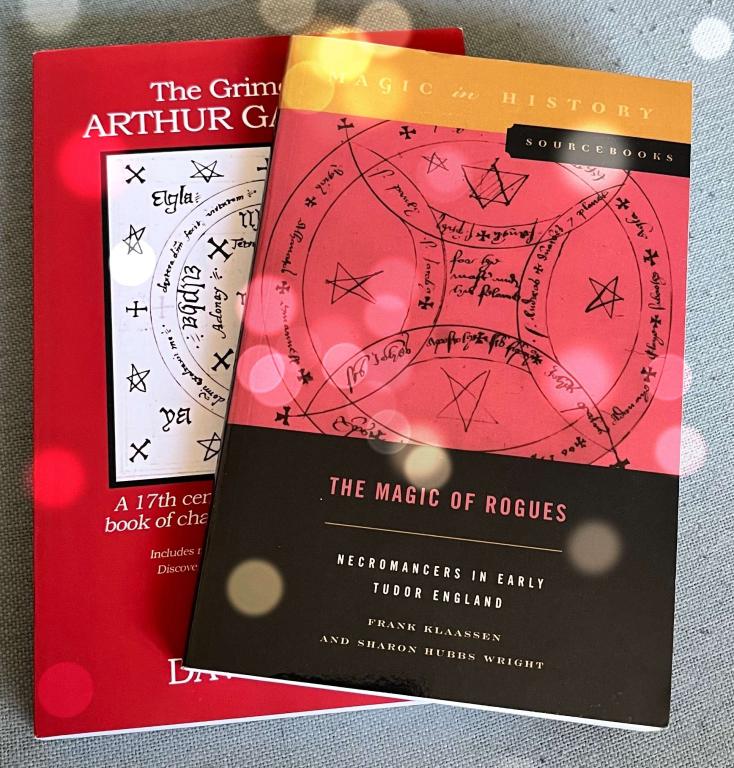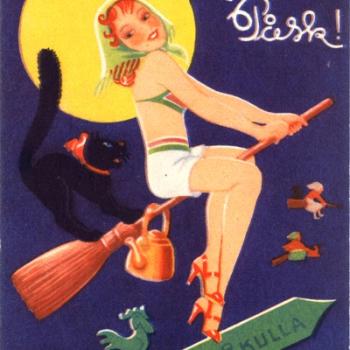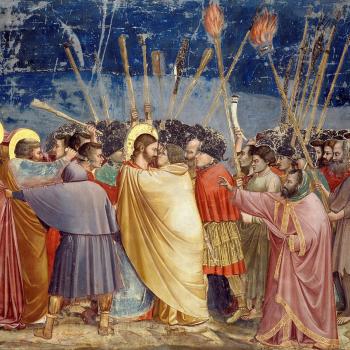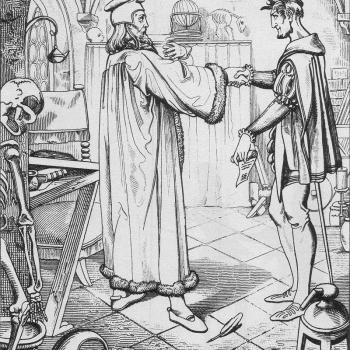And from that fatal moment, till this time
The fairy king has never deign’d to show
His native form, but wandering to and fro
Now dwells upon the mountain peak sublime,
Now hid beneath the forest’s gloomy shade…
– Oberon, A Poem, from the German of Wieland, by William Sotheby, 1798. [1]
Over the past few years, since the publication of The Book of Oberon, a sixteenth century manuscript grimoire, I have had a curious fascination with the folk magic custom surrounding the spirit of Ober[i]on. Following study of this beautiful book, carefully edited by the hands of Daniel Harms and Joseph Peterson – masters of the grimoire tradition – and illustrated under their guidance by James R. Clark, I was instilled with a certain sense of the spirit of Oberon that I couldn’t shift.

At the time of first purchasing The Book of Oberon, I was engrossed in study of John Dee’s angelic magic (sometimes known as Enochian*), and was becoming interested in the cross over between the work of Cunning Folk, scholarly and clerical magicians, and the common magics of the working class. In practicing a traditional witchcraft that has occasion to work with those magics of the past, linking directly through the literature now more widely available than ever before, I often seek to understand and operate sigaldry [2] that incorporates traditional spirit work.
Whilst contemplating this, my habit is to take lengthy walks wherein thoughts are hashed out. During one such walk, I was specifically visiting the nearby site of an old Romano-British temple dedicated to the Gallic Jupiter type god Sucellus and the arboreous Roman god Silvanus. The site is of peculiar interest to me and I have grown rather attached to the location, understanding the temple, now consumed by ancient woodland and heath, to have been established by the Romans to appropriate the area’s already established worship. Indeed, archeology would suggest that the older ceremonial or ritual ground was not directly where the temple remains and temenos now lie, but are a short distance away.

Regardless, I was enjoying a leisurely walk when I happened into an area of distinct stillness, not a single breath of wind moving leaf nor branch in the dense woodland, which opened out before me into a small valley. It transpired that the area I had unwittingly wandered into is known historically and locally as ‘Oberon’s Glade’. This remarkable revelation inspired new connections and I sought direct ways to apply what I had been studying in approaching the spirit traditionally known as the King of the Fairies…
The English medieval and renaissance name Oberon comes from the Old French Romance name Auberon, itself originating in the Germanic Alberich. Alberich is a character from Norse and High Middle German mythology, found especially in the medieval story Nibelungenlied, telling of the adventures of the epic hero Siegfried. In its Middle High German, Alberich becomes more easily recognised to signify the King (-rich) of the elves (Alb-), and signifies the authority of the spirit.
Oberon features in the medieval period as a dwarf or elf, signifying his otherworldly character, and frequently is recognised as a forest dwelling spirit. In the 13th Century French romance Les Prouesses et faitz du noble Huon de Bordeaux, for example, Oberon presides over a forest, while in the Mid High German poem Ortnit, Alberich appears only to the wearer of a magic ring. This is reminiscent of the Ring Cycle of Wagner, based in part upon Nibelungenlied. Within the high medieval tradition, Oberon/Alberich appears as a dwarf, or else with the appearance of a small child. This feature is relevant to the later appearance of the spirit Oberion in the Grimoires of the late middle ages and early modern period in which certain spirits are often conjured to appear as a young boy, of beautiful appearance.
Curiously, the dwarf of old mythology appears to be synonymous with a type of elf, rather than a distinct race – which chimes with the identification of Oberon as King of Fairies. Indeed, the historic dwarf is sometimes thought of as synonymous with the Norse svartalfar, and myrkalfar – dark elves. This seems to signify chthonic elves who dwell mainly in the earth, underground, mound dwelling and who are involved in works of smithing, metallurgy and, therefore, treasure guardianship. Once more, this relates quite pleasingly with the role of Alberich as the guardian of the treasure of the Nibelung’s in Nibelungenlied.
During the period in and around the Elizabethan era, around the time that William Shakespeare would have been collating his stories for A Midsummer Night’s Dream, the magicians of the age were summoning the spirit of Oberion for a particular purpose, which corresponds perfectly with the preceding myth and folklore surrounding Oberon/Alberich – that is, treasure hunting. Indeed, in the fantastic sourcebook The Magic of Rogues: Necromancers in Early Tudor England, this is precisely the use to which Oberion is being applied (I am indebted to Dr Alexander Cummins who recommended this superb study during a podcast interview).
In preparing to conjure Oberion, I made use of all the available material from the late modern sources. This proved to be more manuscript references than I expected, and include The Grimoire of Arthur Gauntlet (Sloane MS3851) , A Collection of Magical Secrets (Wellcome MS4669) and, of course, The Book of Oberon (Folger MS V.b.26). Into this mix, The Magic of Rogues provides the most complete rendition of the operation for conjuring Oberion (Sloane 3318, fols. 62r-65r). Each of these provides good cross reference material and agreement in some areas, and departure in others – although there is more in agreement than departure. The combination of these provides a complete conjuration possible.
Since undertaking the rather ambitious operation to conjure Oberion, I can commend the effort to those so willing to undertake similar works. My experiences with the spirit have been nothing but positive thus far, and I recommend him to my colleagues who work with such spirits. And in doing so, fulfil a part of a bargain struck…
* The term Enochian sometimes can be understood to refer to the modern and post Golden Dawn practice that developed around John Dee’s angelic magic. My personal preference is for a more pure approach, studying Dee’s manuscripts at the British Library.
- https://hdl.handle.net/2027/mdp.39015027522880?urlappend=%3Bseq=269%3Bownerid=1036349-257
- Middle English; sorcery.
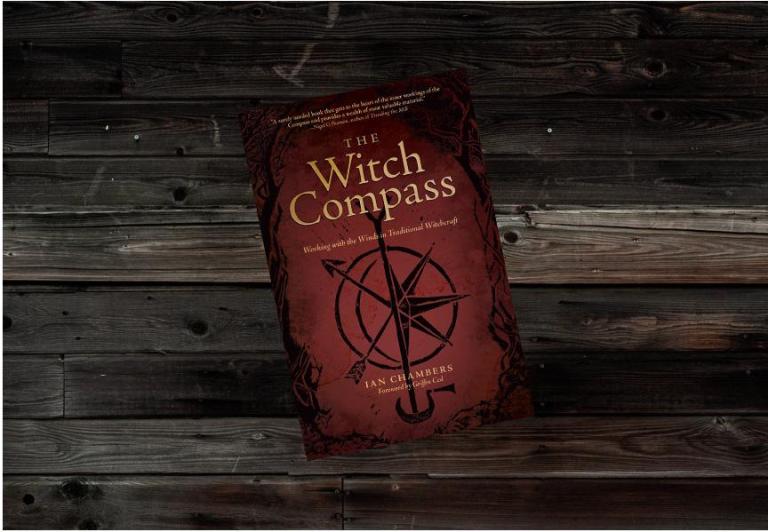
The Witch Compass: Working with the Winds in Traditional Witchcraft, is published by Llewellyn and due for release summer 2022. It is available to preorder from Amazon (Amazon.co.uk), all good book sellers and your independent bookstore (please support these important resources in our community


